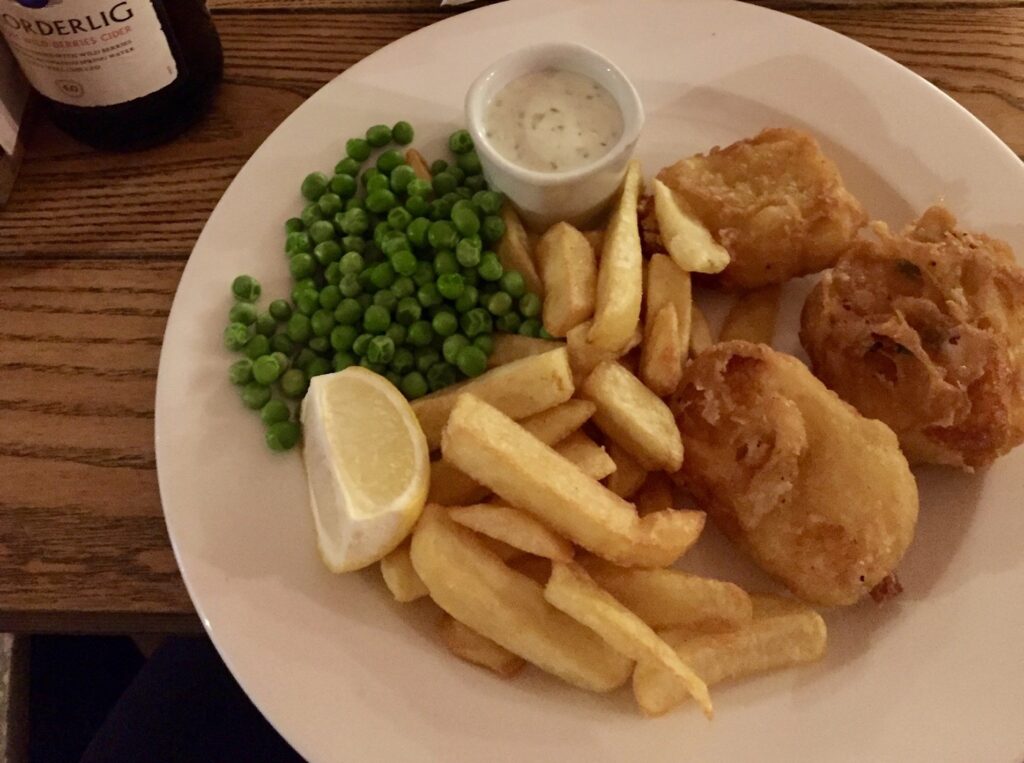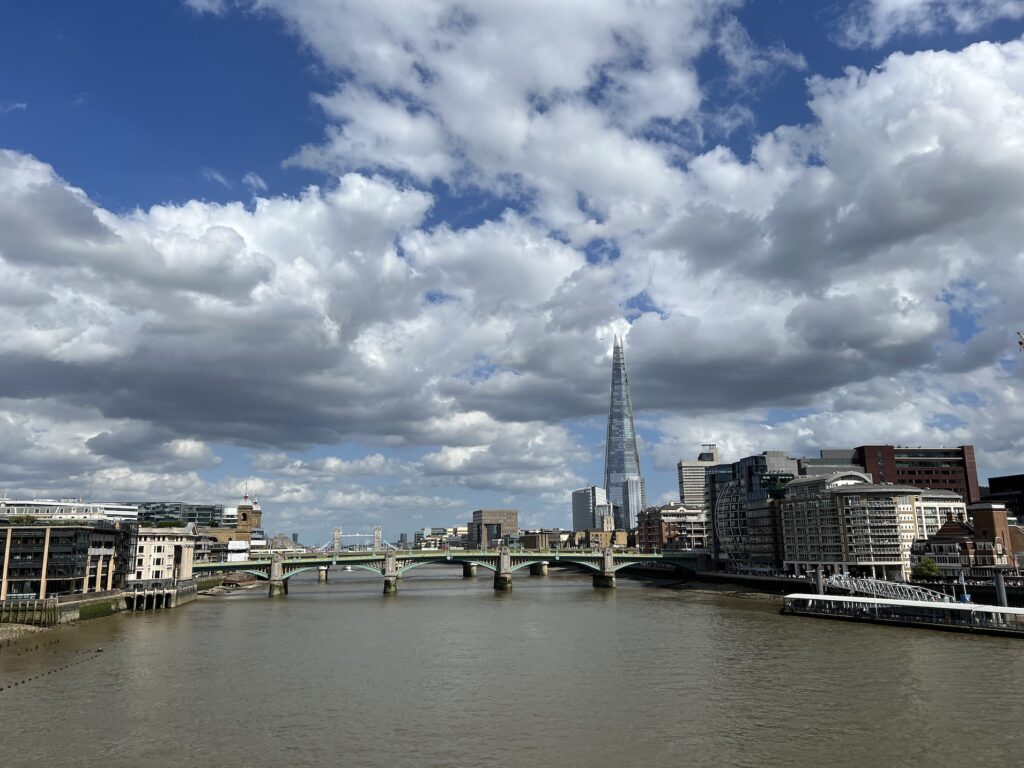We’ve traveled to London many times now, and every time I leave I find myself wanting to go back. There’s something about the cozy glow of a British pub and the warmness of the locals’ accents that just feels like home to me. In fact, just the other day my husband asked where I’d live if we could move anywhere in the world, and I didn’t hesitate to say London.
I will admit, though, that planning a trip to London can be a tad overwhelming — especially if you’re visiting for the first time or coming from a smaller town. In this guide, I explain everything you need to know about planning a trip to London. I’ll start by getting you oriented with the city itself, then dive into details like how to get around, where to eat and what do. Then we’ll wrap things up with some packing recommendations and my best London travel tips.
Let’s get planning!
In this post
Here’s what we’re covering in this post. We invite you to read the full guide or jump ahead to the section you’re most interested in.
- London at a glance
- London map & neighborhoods
- Getting to and around London
- Eating & drinking in London
- Things to do in London
- Plan your London visit
- What to pack for London
- 10 tips for visiting London
London at a glance
London is a city that needs no introduction, but you know I can’t help but give it one.
The capital of both England and the United Kingdom, London is a cosmopolitan, global city that influences the rest of the world on just about everything from art to technology to architecture and more. The city is known around the world for its iconic buildings, royal family and deep global history. The city is diverse — a true blend of cultures, flavors and languages. London is famous for it’s beautiful parks, world-class museums and of course, afternoon tea.
It’s a beautiful city that calls to visitors from across the pond and across the globe. The city is so vibrant and full of things to do that you can’t possibly do it all in one visit. Which is great because London is a city you will definitely want to come back to again and again.
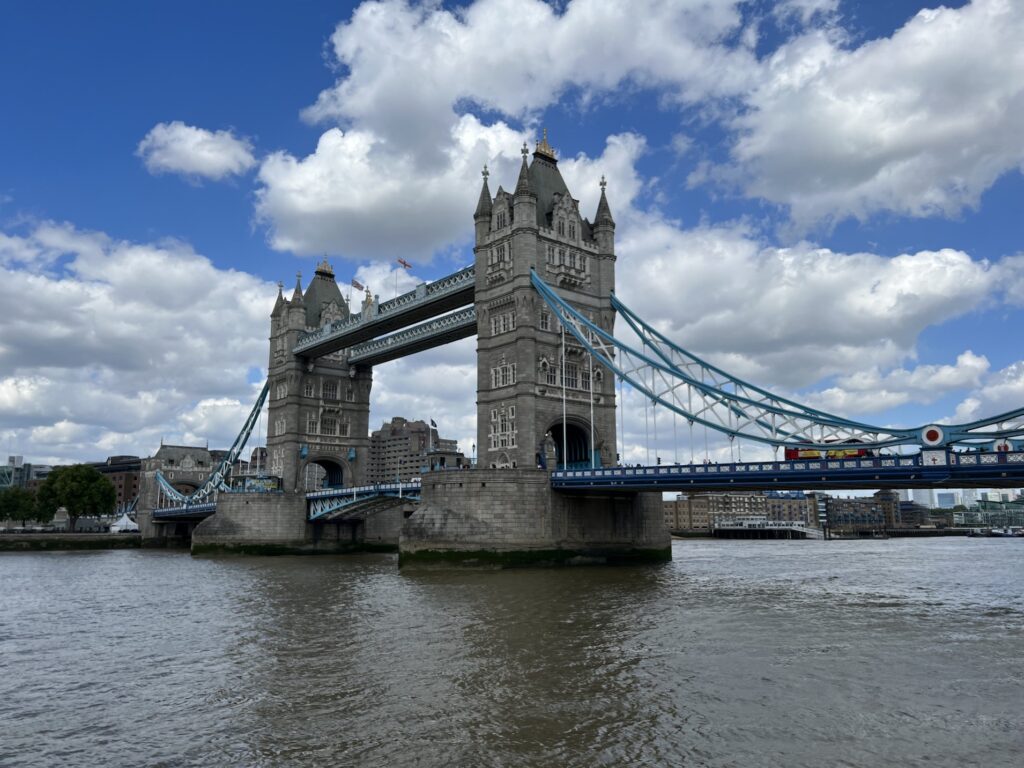
London basic facts
- Population: 9.5 million
- Area: 607 square miles
- Currency: British pound (1 British Pound = $1.15 US dollars as of Sept 2022)
- Official Language: English
- Climate: Oceanic climate. Think mild and humid with warm summers, cool winters and pretty consistent annual rainfall.
- Annual Visitors: 30 million
- First Settled: AD 45 (almost 2,000 years ago!)
London map & neighborhoods
Because of the long history and complicated municipal divisions within the city, defining London is a bit tricky. Let’s start broad and work out way down.
Greater London is one of the nine regions of the country of England. The region is then divided into 32 boroughs plus the City of London, which is its own city within the city. The boroughs are then further broken down into 48 different neighborhoods, which are used more conversationally than the official borough names. Sometimes Boroughs are grouped together to reference broader areas, like Central London or Inner London.
This tends to result in tourists who aren’t quite sure where they are or where they’re supposed to be going. If someone says “be sure to explore the West End,” you might immediately find yourself asking “but where exactly is that?”
My suggestion? Worry less on the name of the area and focus instead on what specifically you want to see there. Even if your plan is to explore or wander through an area, start with at least one address you can enter specifically into Google Maps and go from there.
I’ve put together a very unofficial map that outlines the rough boundaries of some of the most popular areas that I discuss in this post. If you click into the map, you can then click on each color coded neighborhood to see its name. You can then zoom in to see what places and attractions in inside that area.
Getting to & around London
London is a public transportation dream. It’s so easy to get around London on public transit via land, rail, water or sky. From the moment you land at the airport to getting to your last dinner reservation, you can truly get wherever you need to go with London public transit.
Let’s breeze over some of the details.
Trains in London
There are several different train lines and systems that run through and around London.
The London Underground, also known as the tube, is the rapid transit train system that serves Greater London in the greatest capacity. There are 11 lines that serve almost 300 stations across the city. The London Underground is the cheapest and fastest way to get just about anywhere in London. (We also have a detailed guide on how to use the London Underground here.)
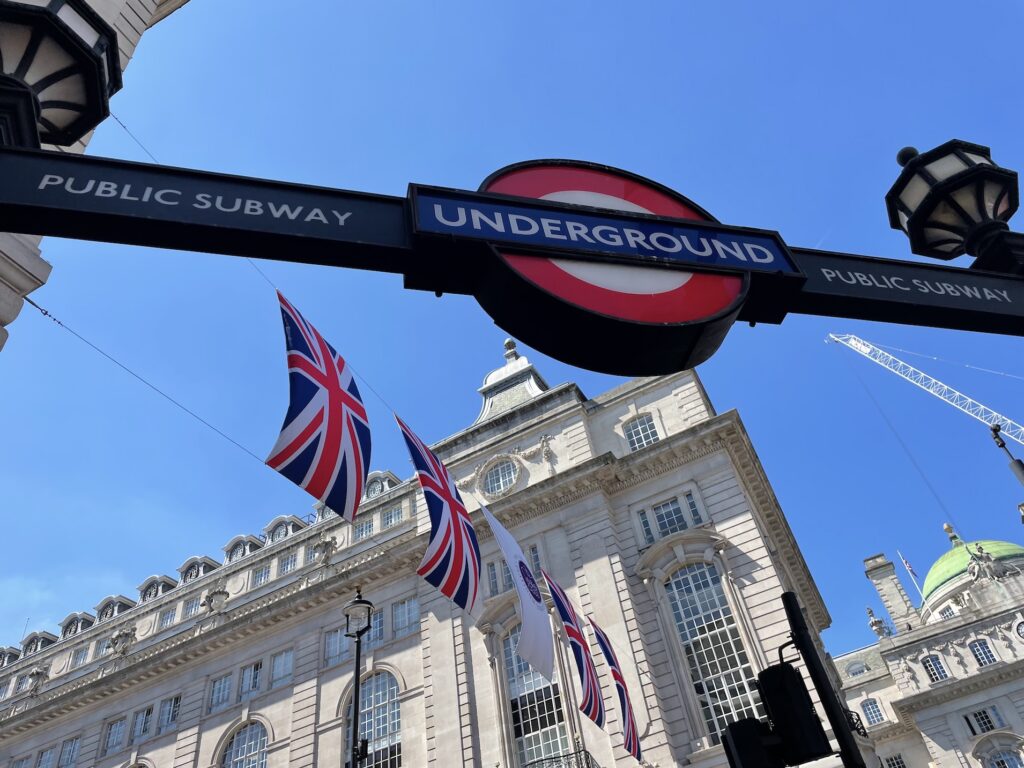
While the London Underground connects locations within the city, the London Overground connects the center of the city to outer boroughs and suburbs. There are stops within the city, but they’re fewer and further between. You will likely take the London Overground if you are moving from a location near a main train station and heading to a popular location that’s a bit further away.
You can pay for your trip the same way on both of these train services. Simply tap any contactless credit card or an Oyster card (London’s public transit card) on the card reader at the entrance to pay for your journey. You do not need to purchase a separate ticket for the London Underground or Overground. (You can, but there’s no reason to waste the time doing it.)
Not all trains in London run 24/7. However, most Underground and Overground trains run from 5 AM to midnight, with select lines running 24 hours on Fridays and Saturdays.
There are other train systems too, like the National Rail (which serves all of Great Britain, similar to Amtrak in the US), the Elizabeth Line (a new hybrid train system that is part metro train and part commuter train), and the DLR (a light rail system with driverless trains).
Buses in London
London Buses are a great way to see the city while you move through it. Most city buses in London really are red double-decker buses, just like you see in the movies. The routes are extensive and run quite frequently, usually every 5-10 minutes.
The traffic in London can be brutal, so a bus commute can be really slow. That makes buses the best option for shorter journeys, especially through central London where there’s a lot to see out the window. For example, one fun bus route is the 88, 159 or 453 bus from Carnaby to Big Ben.
Similar to the train schedule, most buses run from 5 AM to midnight, with select routes running 24 hours. Also, just like the train, you do not need to purchase a separate bus ticket. Simply tap any contactless credit card or an Oyster card on the card reader by the driver when you board.
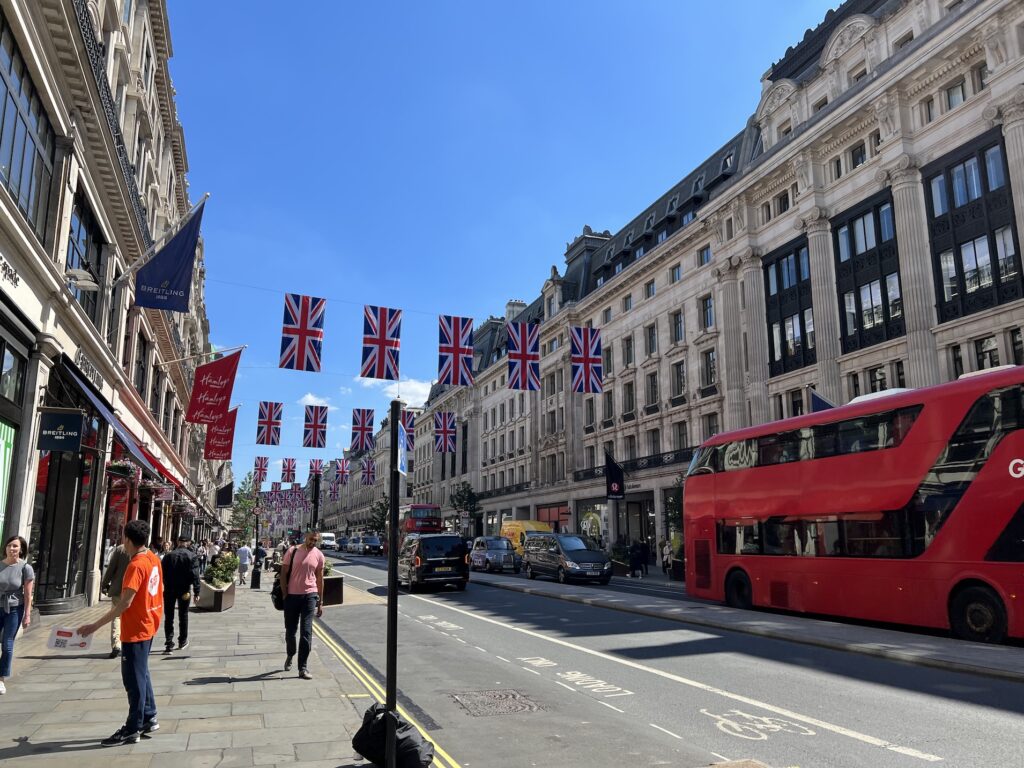
River transportation in London
The River Thames cuts through the heart of London, weaving past some of the cities most iconic sights and neighborhoods like Big Ben, Tower Bridge, Tower of London and Greenwich. It’s no surprise that one of the best ways to get around London is by boat.
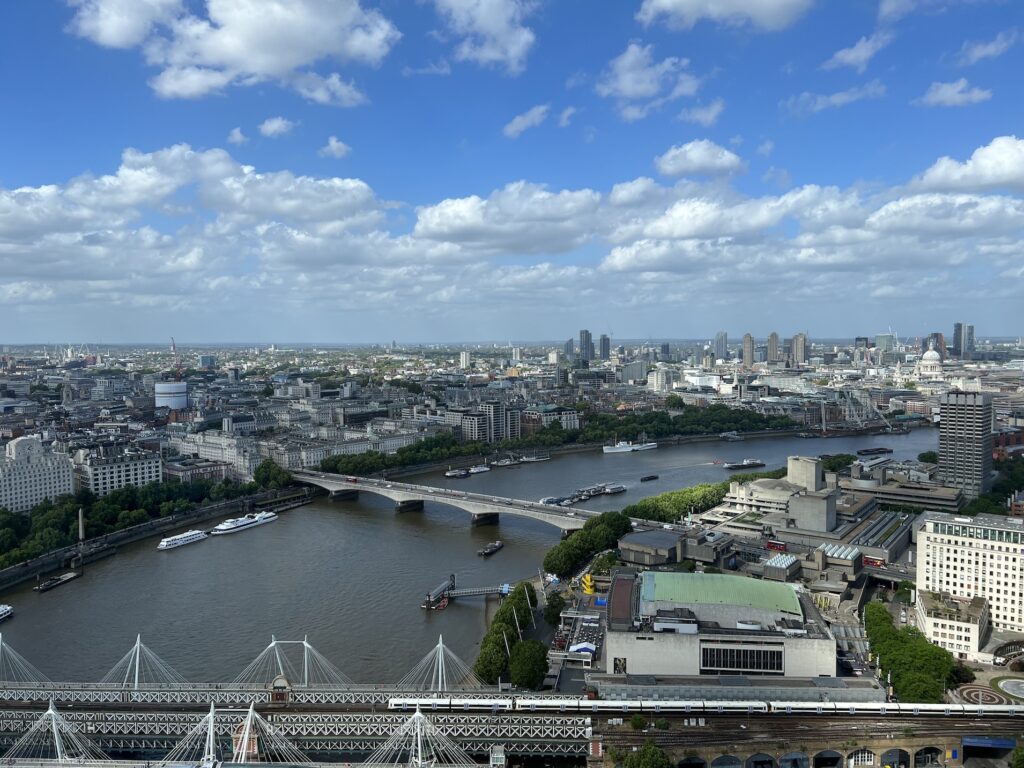
The London River Bus is operated by Uber Boat by Thames Clippers. There are 4 lines that serve over 20 piers on the Thames. Boats usually run every 20-30 minutes. The River Bus runs from about 6 AM to midnight daily, and there is no 24 hour service on any line.
You can pay for the London River Bus with any contactless credit card or an Oyster card when you board. No special ticket is required. Note — there are not Oyster card machines at the piers. If you are paying with an Oyster card, it must already be loaded with enough to cover the max fare.
Our favorite route is the RB1 from the London Eye to Greenwich.
Other ways to get around London
- Walk: London is very walkable, with many of the city’s best attractions within a mile or two of each other. There are plenty of parks and trees around the city that make for a really pleasant journey. The Queen’s Walk, which is a pedestrian walkway that mostly follows the south bank of the Thames between Lambeth Bridge to Tower Bridge, is one of our favorite walking routes in the city.
- Bike: Like many cities, London has a bike share program called Santander Cycle. You can rent a bike from one of the many docks around the city and pay based on how long you ride. You can either pay per half our or get an unlimited month or year pass.
- Taxi & Rideshare: There are taxis available around the city and rideshare services, like Uber, are allowed in London. However, London traffic is notoriously awful. Transiting by car will often be slower and will always be more expensive than taking the train. However, it is an option should you need it.
- Cable Car: The Emirates Air Line is a cable car system that runs across the River Thames between Greenwich Peninsula and the Royal Docks. The journey takes about 10 minutes each way and offers great views of Canary Wharf.
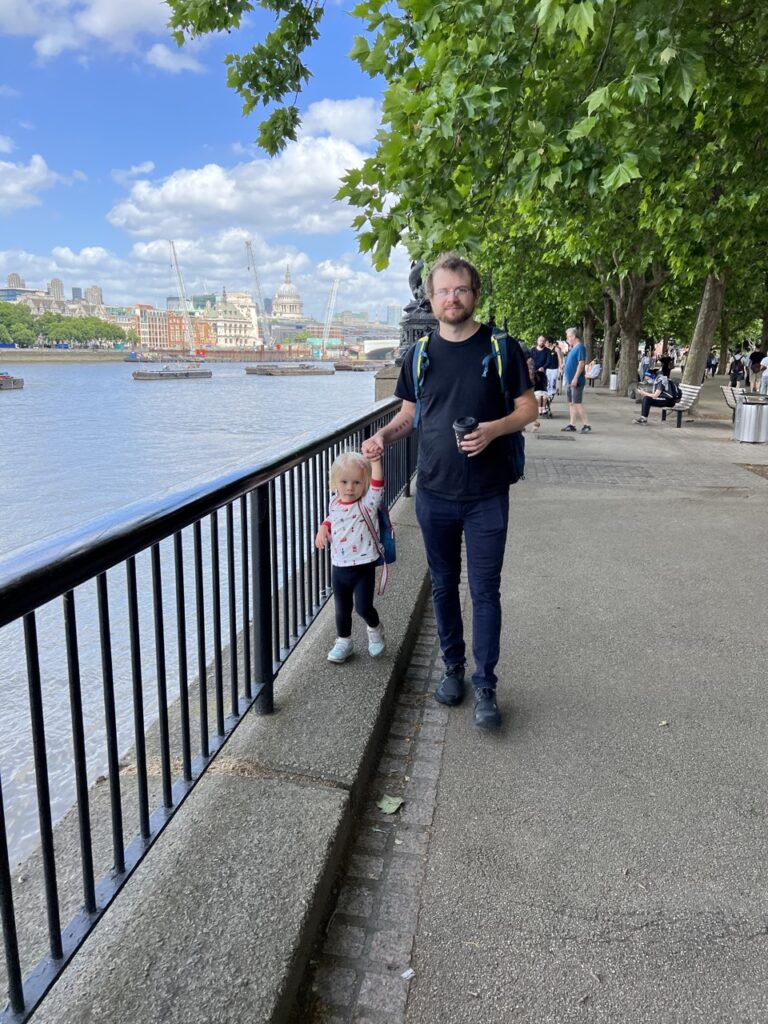
How to get to London from the airport
There are two international airports near London: Heathrow and Gatwick. Both of these airports are connected to the city center by train.
To get from Gatwick to central London, you can take the Gatwick Express train which runs nonstop from Gatwick to Victoria station every 15 minutes. The trip is about 30 minutes and costs between £17 and £20 per person each way, depending how you book. Alternatively, you can take the Thameslink, Southern or Great Northern trains which are cheaper but take longer because they make more stops.
If you’re arriving at London Heathrow, you have several train options to choose from. The fastest and most expensive option is the Heathrow Express to Paddington. It runs every 15 minutes, costs £25 pounds per person each way and takes just 15 minutes. The London Underground also connects Heathrow to Central London. You can take the Piccadilly line from Heathrow to several different stops in Central London in about an hour for around £5. You can also take the new Elizabeth Line to eastern London.
Lastly, you can also take a cab from both airports to your destination in London. This will almost always be a much more expensive and longer journey. If you have a lot of luggage or are arriving late at night, this may be your preferred option.
Eating & drinking in London
The food scene in London ranges from international street food to pubs serving up traditional British fare to Michelin-starred fine dining. The density and variety of restaurants in London makes it easy to find delicious food just about anywhere.
In this section, we’ll keep things high level. We’ll cover what you should eat, where you should eat it, and then touch on some pub culture. We’ll also share our favorite coffee shops because we consider that essential.
That said, we’re not foodies. (We’re vegetarian and travel with a toddler.) So if you’re looking for the best places to each in London, check out these lists from Hand Luggage Only or Savored Journeys.

What to eat in London
While British food is not often considered one of the most sought-after cuisines in the world, there’s something to be said about sitting down to a piping hot savory pie after a long day traipsing around the city. British food is usually very blue-collar and comforting. It’s old school countryside food that is generally low-fuss and filling.
Here are few foods to be sure to try in London.
- Fish & Chips: Fried fish, usually cod, served with chips (aka French fries), has been a London staple since the 1800s.
- Full English Breakfast: The definition is a bit flexible, but a full English breakfast should include a fried egg, bacon, sausage, sautéed mushrooms, baked beans, grilled tomatoes and toast.
- Savory Pies: Think meat, vegetables, cheese and/or beans all baked into a savory pie crust. You can find them at pubs and food markets around London.
- Sunday Roast: You can find this traditional meal on restaurant menus any day of the week, but it was originally a Sunday staple. The exact plate varies by chef, but it typically includes a roasted meat, potatoes, vegetables and Yorkshire pudding (think popover) topped with gravy.
- Curry: There’s a fun fact out there that London has more Indian restaurants than Mumbai. I didn’t have the energy to dig too far into that claim, but I do know London is overflowing with curry houses. It’s a popular stop after a long night at the pubs.
- Halloumi: This salty, non-melting cheese is from Cyprus, but it’s really popular in London. It’s a fantastic vegetarian option and you can find it in restaurants and food trucks around the city. It is often served as a wrap or just grilled on its own.
- Afternoon Tea: This counts as eating because afternoon tea is served with literal towers of sandwiches and treats. There are so many places around the city that offer a wide variety of afternoon teas, from formal to Harry Potter themed to on a bus and more.
- Cask Ale: And lastly, a cask ale counts as eating because carbs. (Don’t argue.) This particular beer style, also called Real Ale, is common in London. It’s an unfiltered beer that is much less carbonated and served at a warmer temper (cool vs cold) than a typical draft beer. It’s perfect on a fall afternoon if I do say so myself.
Where to eat in London
As you’d expect from a major global city, there’s plenty of places to eat in London. While London isn’t often renowned for its food scene, as a non-foodie I have to disagree. I think London has a great selection of approachable restaurants and delicious foods, especially for a vegetarian.
Here are a few different types of places to eat in London.
- Pubs: You can’t throw a rock in London without hitting a pub. While some offer just drinks, many double as restaurants serving pub fare like fish and chips, savory pies and sausages. Some pubs are known for having great food (like The Princess of Shoreditch) while others are just offering the sustenance needed to keep drinking (like The Harp, Covent Garden).
- Food Halls: There are several different food halls around town, where you can find a variety of different vendors selling food ranging from locally sourced British staples to international street food. They’re great for trying different types of foods, especially if your travel party has mixed palates. Some of our favorites are BOXPARK in Shoreditch, Borough Market and Camden Market.
- Street Vendors: You can find street food vendors and trucks all over London, particularly in the summer months. The Queen’s Walk on the south bank of the Thames between Blackfriars Bridge and Westminster Bridge is a great strip for food trucks in the summer.
- Parks: London is famous for its beautiful parks. If you’re looking for an excuse to spend more time in the parks, pack up a picnic. Drinking alcohol is allowed in London parks, so you can even pack up a bottle of wine or Champagne and make an evening out of it.
- Restaurants with a view: There are restaurants and bars at the top of several of London’s tall buildings, like the Shard and the Gherkin. This can be a pricy option, but it is also a good alternative to an observation deck. We enjoyed dining at Darwin Brasserie at the Sky Garden, which also gave us expedited entry to the garden area since free tickets were sold out.
- Quick service: If you’re looking for a quick dinner or lunch, London has all of the fast food restaurants you’d expect plus great local options. London is also known for its curry houses, which are great for an easy dinner or late night meal.
- Vegetarian: London is incredibly vegetarian friendly! From food trucks to fine dining, there is almost always a good vegetarian option. Halloumi is a popular vegetarian substitute, but vegan fake meat is easy to find, too. For fast food, run-don’t-walk to Neat Burger for great burgers and amazing vegan cookies and cream shakes.
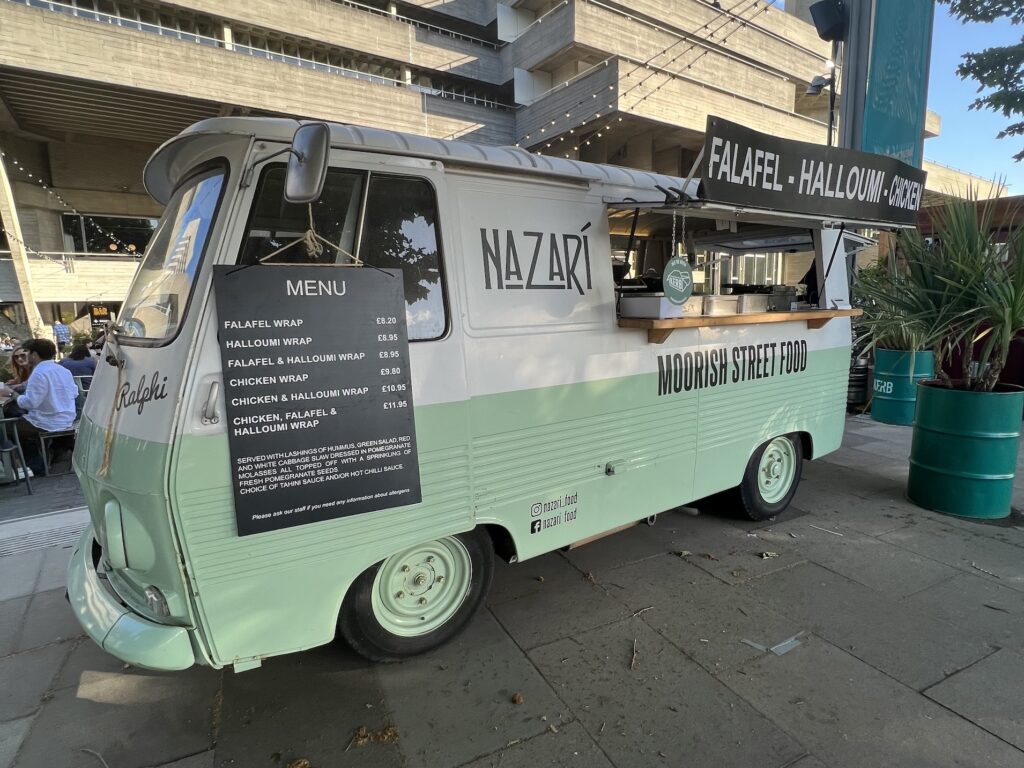
How to order a beer at a London Pub
When you say you’re going to London, people will tell you that they drive on the other side of the road and they call fries chips, but they don’t tell you how to order a beer at a pub. That’s pretty important if you ask me. This is one of those small things that you don’t even know you don’t know, until you find yourself incredibly frustrated (and probably thirsty).
Here are a few important notes on how British pubs work.
- Seat yourself. When you enter a pub, take any open seat or table. There will not be a host to seat you.
- Order at the bar. There are no waiters to take your order at London pubs. Instead, walk up to the bar and place your order with the bartender. You will pay at the bar. If you order a drink, they’ll pour it for you right then. If you order food, they’ll usually give you a number to take back to your table.
- Don’t overtip. It’s not common to tip at pubs in London, so it will not be expected. If you do choose to tip, be sure to be clear with the bartender that the money is for them. A few pounds is fine and in cash (or coin). You can’t typically tip on credit cards in London pubs. Only tip with your final tab and not during each round.
- Don’t drink underage. The legal drinking age in London is 18. Breaking this rule can result in a fine or even arrest.
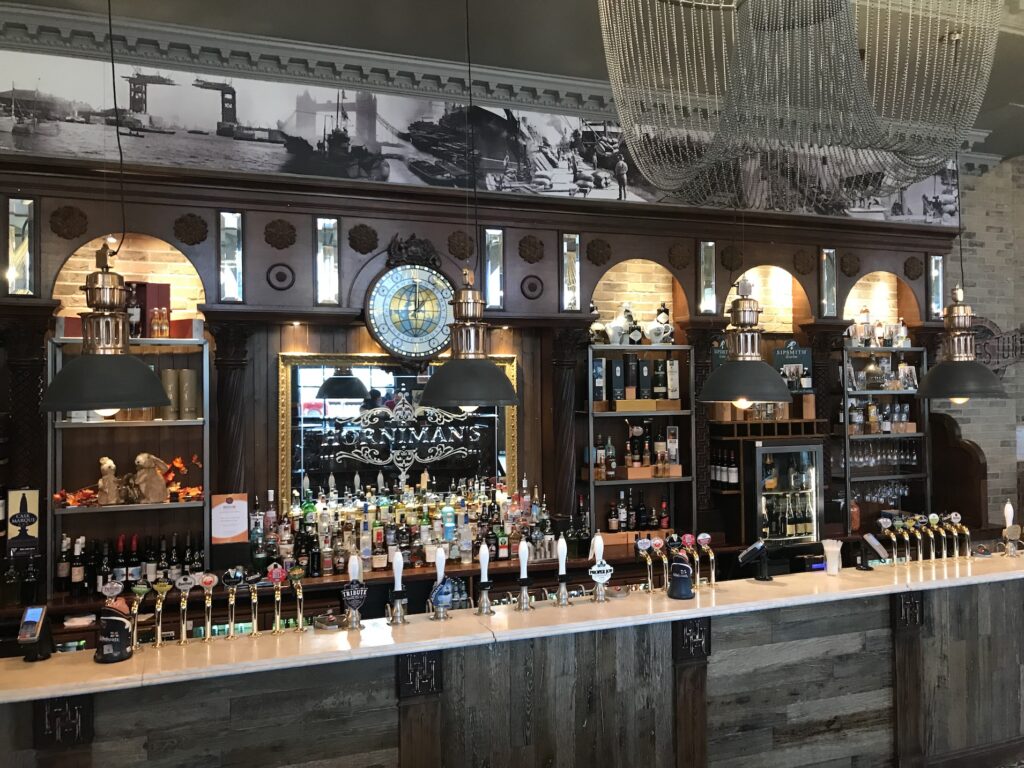
Best Coffee shops in London
London is a very well caffeinated city. There are so many amazing independent coffee shops as well as all of the popular chains. Here are a few of our favorite coffee shops in London.
- Best coffee: Department of Coffee and Social Affairs
- Best for takeaway: % ARABICA
- Best for food: Kaffeine
- Best near Borough Market: Monmouth Coffee
- Best street vendor: The Black Cab Coffee Co at Brick Lane Market

Best things to do in London
London is a huge city that is bursting with things to see and do. It’s impossible to everything on one trip to London, but that’s fine because you’ll want to come back again anyway.
We’ve broken down the best things to do in London into a few different categories based on interest and type of traveler. One thing’s for sure, no matter what you’re looking for, you’re sure to find it in London.
Must do in London for first time visitors
- Borough Market: Come hungry to London’s oldest and most famous food hall. You can taste locally made specialties or indulge in street foods from around the world. Check out our full guide to Borough Market for all the details and some of our favorite booths.
- St. James’s Park: This beautiful park is located right between Big Ben and Buckingham palace. Watch the birds splash in the lake or cross the bridge for a great city view.
- Tower of London: This famous castle has served as a prison and a royal residence, and today houses the Crown Jewels. It’s been fiercely guarded by the famous Yeoman Warders and ravens since the 1400s.
- Sky Garden: London’s highest public garden is free to visit as long as you secure a timed entry ticket. There are also four restaurants inside, and a reservation to any of them includes access to the gardens without a separate ticket.
- Tower Bridge: London’s most iconic bridge crosses the Thames near Tower of London. You can walk across it or just enjoy the view from the bank.
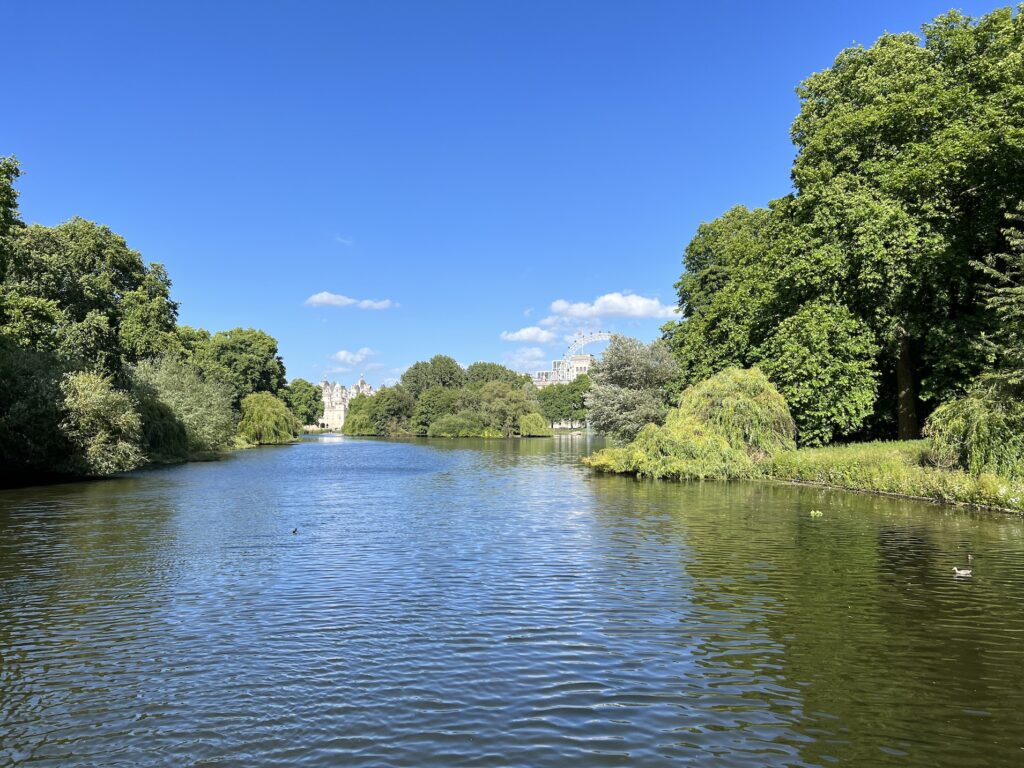
Museums & indoor attractions in London
- British Museum: There are lots of great museums in London, but if you had to choose one it should be the British Museum. It has a great range of exhibits from Egyptian hieroglyphics (including the Rosetta Stone which was used to first translate hieroglyphics) to Greek sculptures to one of the oldest chess sets in the world.
- Westminster Abbey: One of the country’s and the world’s most famous churches, Westminster Abbey has been the place of royal coronations for almost a thousand years. Paid tours are available Monday through Saturday or you can attend a service for free.
- Victoria & Albert Museum: This museum is technically an art museum, but it houses much more than just paintings and sculptures. You’ll see the world’s oldest carpet, a hypnotizing collections of jewels and massive greek columns carved with over 150 scenes of war, just to name a few.
- Churchill War Rooms: This museum takes you down into the underground complex where the British government lead their war efforts during WWII. The war rooms are one of the five branches of the Imperial War Museum.
- The Shard: There are a few tall buildings with great observation decks in London, but the Shard is a great option. We recommend heading to the top an hour before dusk and watching the sun set with a glass of champagne.
Parks & sites in London
- Big Ben: Technically Elizabeth Tower, this clocktower is the most recognizable structure in London. We have a detailed guide to how to see Big Ben here, too.
- Hyde Park: The centerpiece of this park is the Serpentine lake. Watch the birds or take a pedal boat out on the water in the summer.
- Queen’s Walk: This pedestrian walkway mostly follows the south bank of the Thames between Lambeth Bridge and Tower Bridge. It’s got great views of the city and passes along several of the city’s popular attractions. In the summer, it’s alive with street performers and food vendors.
- Buckingham Palace: Paid tours of the official royal residence are typically available during the summer months (usually July through October). Another popular event at the palace is the Changing the Guard, which is free and typically held every Monday, Wednesday, Friday and Sunday at 11 AM (be sure to check the official schedule here). You can also view the palace and guards from the gates anytime.
- The Regent’s Park & Primrose Hill: These parks are a tad quieter than the more popular St. James’s Park and Hyde Park, but no less beautiful. Come for the rose garden at The Regent’s Park and stay for the fantastic views of London from the top of Primrose Hill.

Best things for kids in London
- London Eye: The iconic London Ferris wheel is a joy for the whole family. Adults will love the views over the Thames and children will be in complete awe by the size of each capsule.
- London Transport Museum: Children will marvel at the life-size trains of yesteryear and today. There are several play spaces and lots of interactive exhibits. Plus, tickets are sold as annual passes so you can come back as much as you like during your trip. (We have a full guide here.)
- Tate Modern: This free museum is great for kids because there is no pressure to spend too much time there. Plus, on the bank side of the museum, there’s often street performers (like folks blowing giant bubbles), which is a treat for little ones.
- Golden Carousel: At only £3 a pop, this carousel is a much cheaper ride than the London Eye. It’s a great treat for a young child who maybe just sat through an entire dinner or trudged through a museum that they weren’t super thrilled about.
- Jubilee Park & Garden: The best playground in London (unofficially) is at Jubilee Gardens. There’s so much to climb on, slide down and jump off, all under the shadow of the nearby London Eye.
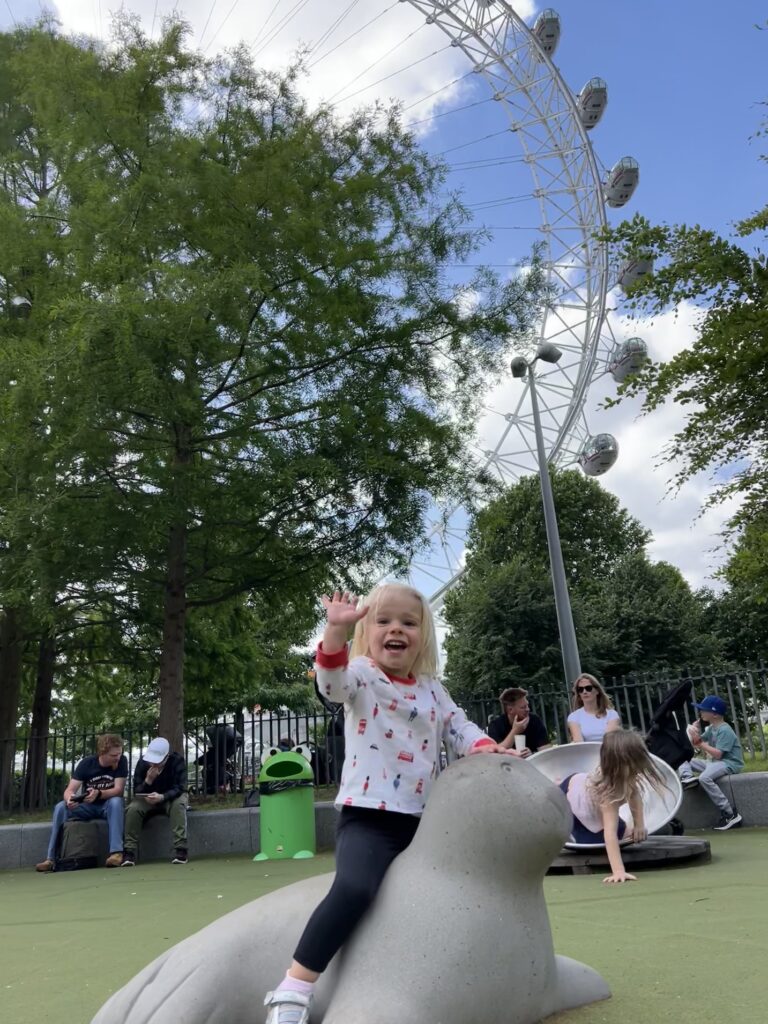
Things to do in London for return visitors
- Little Venice canal boats to Camden Town. If you’re looking for a fun, new thing to do in London, try the canal boats. The hour-long guided tour takes you on a journey through time from horse-pulled boats to the most expensive mansions of today. We also have a full guide to the Little Venice London canal boats here.
- Explore Notting Hill. Even if you haven’t seen the Hugh Grant film, this neighborhood is a delight! It has a bustling street market (every day except Sunday), tons of eclectic shops, and the most beautiful colored houses and store fronts. Here’s a guide to how I spent a perfect morning in Notting Hill.
- Shoreditch markets (Sundays). Once you’ve seen some of the famous sites of London, you might be ready to explore some more authentic parts of the city. There is no better neighborhood to start with than Shoreditch. Visit on a Sunday and start at the Columbia Road Flower Market. Then walk through Brick Lane Market, the Truman Brewery Market and Upmarket.
- River bus to Greenwich. Greenwich is a bit far from the main sights of Central London, so a lot of people skip it on on their first visit. It’s a great adventure, though! Take the river bus down the Thames to Greenwich Pier. Stroll through Greenwich Market, visit the Royal Observatory and the National Maritime Museums and then fly over the Thames on the Air Line.
- Twilight at London Zoo. If you’re visiting in the summer, check the schedule for Twilight at London Zoo. The zoo stays open late for adults only. Grab a cocktail and gaze at the animals while enjoying some of the best sunset views in town.
- Day trips. There is so much to do in London that it’s hard to want to leave London on your first visit. If you’re back for your second, third or twentieth time though, it’s a good time to see a bit more of what England has to offer. Which leads us to …
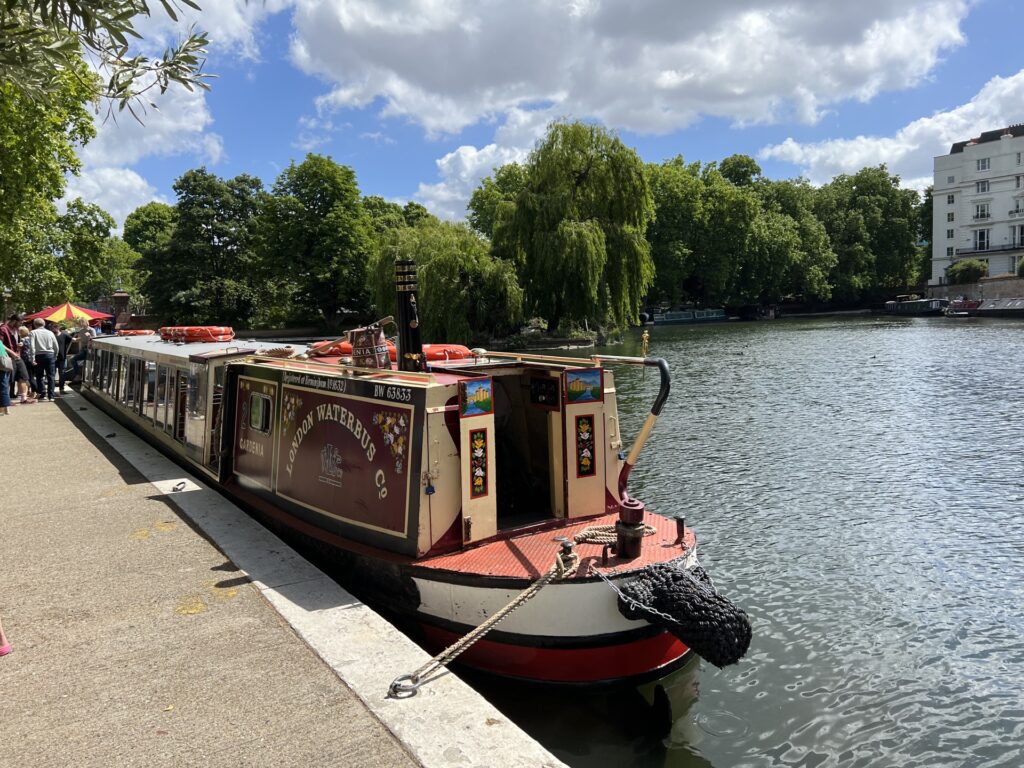
Great day trips from London
- Stonehenge: The most famous stone circle in the world is located just a few hours from Central London. There are a few different ways to get there, but there is not a direct train. A guided tour is usually the way to go. We have a detailed guide and review of our Stonehenge tour here.
- Windsor: Just outside of London is the quaint town of Windsor. The heart of the town is Windsor Castle, where Queen Elizabeth II primarily resided in her later years. The town is full of charming streets, festive pubs and pedestrian shopping streets to keep you busy all day.
- Harry Potter Studio Tour: Fans of Harry Potter will love to see the sets and props that brought the books to life on screen. There are tours available that include transportation from Central London or you can get there on public transportation, which only takes an hour but requires a couple different trains.
- Oxford or Cambridge: If the thought wandering through a college campus, passing through quads and around studious looking gothic buildings gets you jazzed, you might fancy a jaunt to Oxford or Cambridge. You can get to both towns via train.
- Football Stadium Tours: If you’re a fan enough of football to know that I’m referring to what American’s call soccer, you’re a fan enough to know that London is home to several Premier League football clubs. If you can’t make it to a game, three of the largest stadiums in the city (Wembley, Stamford Bridge and Emirates Football Stadium) all offer tours of the stadium and grounds.
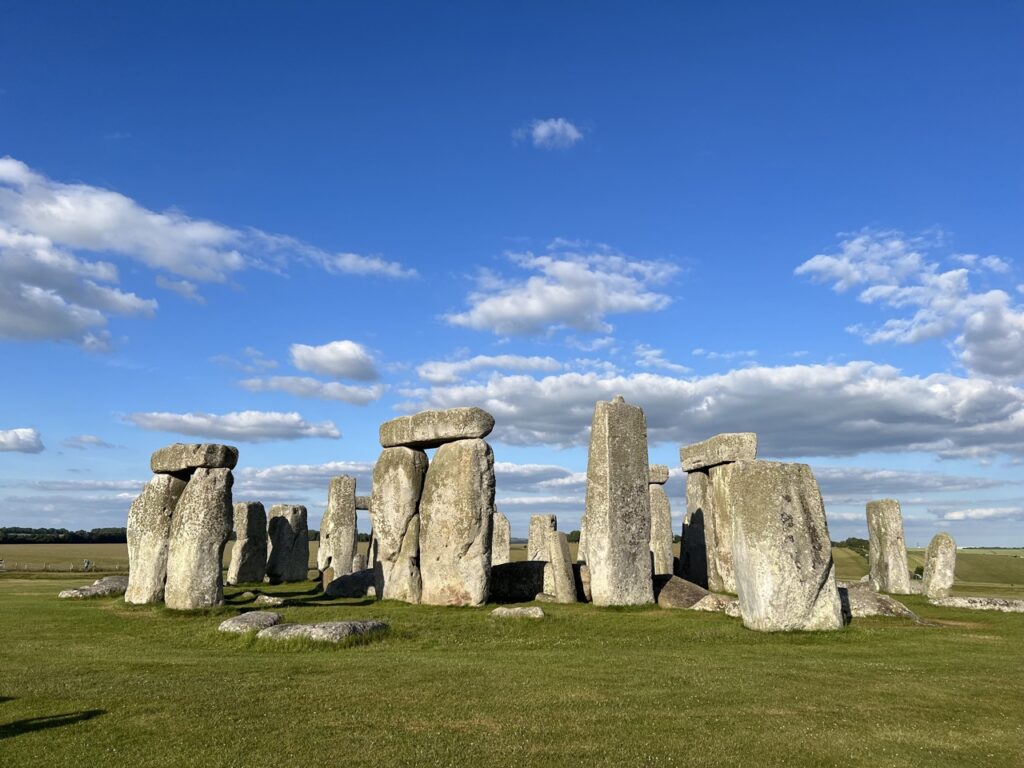
Plan your London visit
Okay, now that we’ve covered the fun stuff, it’s time to get down to the nitty-gritty of planning a trip to London. In this section we’ll cover the important stuff for planning a trip to London.
When to visit London
There are plenty of reasons to visit London during all times of the year. Here’s a quick look at what London is like during each season. I took some liberty with my seasonal definitions to closer align with London’s weather.
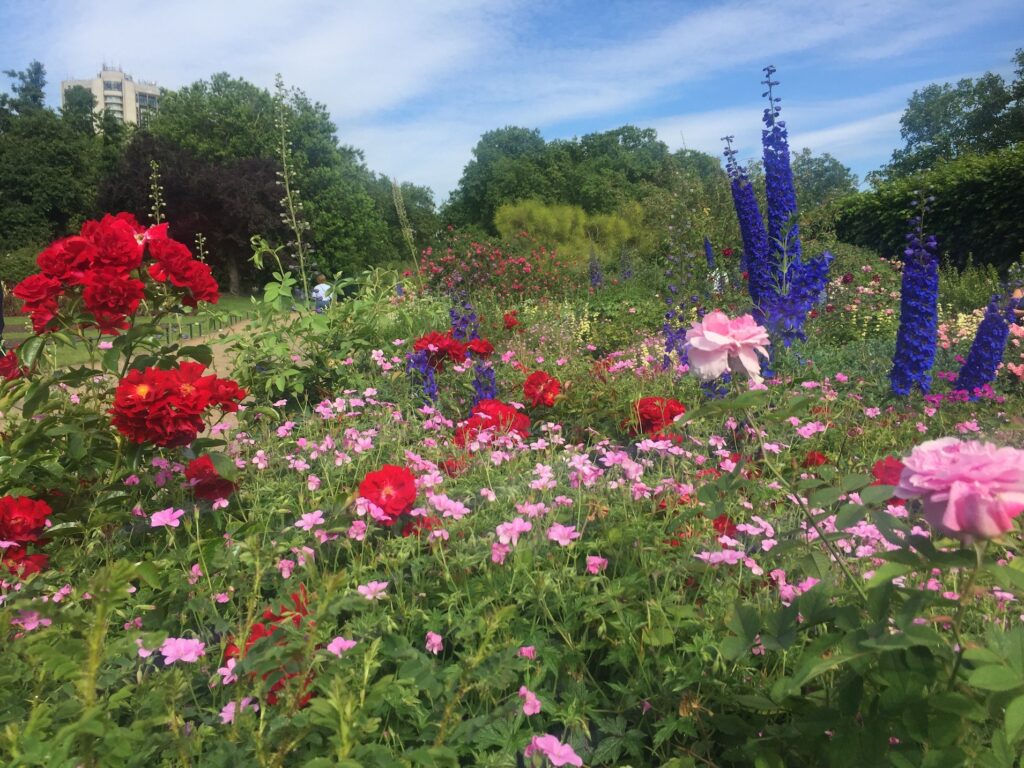
- London in the Spring (April – June): As temperatures rise and flowers bloom, the many parks become the star of a spring London trip. Plan to spend lots of time outdoors, but be prepared for bad weather, too.
- London in the Summer (July – September): Street vendors and performers, festivals and special events run rampant in London during the summer. Crowds are high but but so is the energy level. Indulge in outdoor dining, long walks and the best chance of clear skies.
- London in the Fall (October – November): Temperatures and rain fall come autumn in London. While the weather is a bit all over the place, it’s the best time to enjoy the fall foliage, cozy up in a pub or get lost in a museum.
- London in the Winter (December – March): Christmastime in London is a winter wonderland. The city lights up with seasonal events and decorations, and it’s the perfect destination for Christmas shopping. December is one of the more popular times to visit London, but things get much slower and colder from January through March.
The most popular time to visit London is during the summer months from July through August. During this peak travel season, you’ll have the most crowds, but you’ll have have the best weather and the most activities going on. If you’re visiting London with kids, summer is the way to go. It’s easier to travel with kids during good weather, plus they’re usually out of school anyway.
Personally, my favorite time to visit London is in the fall, around October. I like that the weather is cool and sometimes rainy. London has such cozy vibes, and it’s great to hole up in a dark pub or warm coffee shop in the late afternoon. I love fall produce and hard cider, which makes Borough Market in the fall impossible to beat.
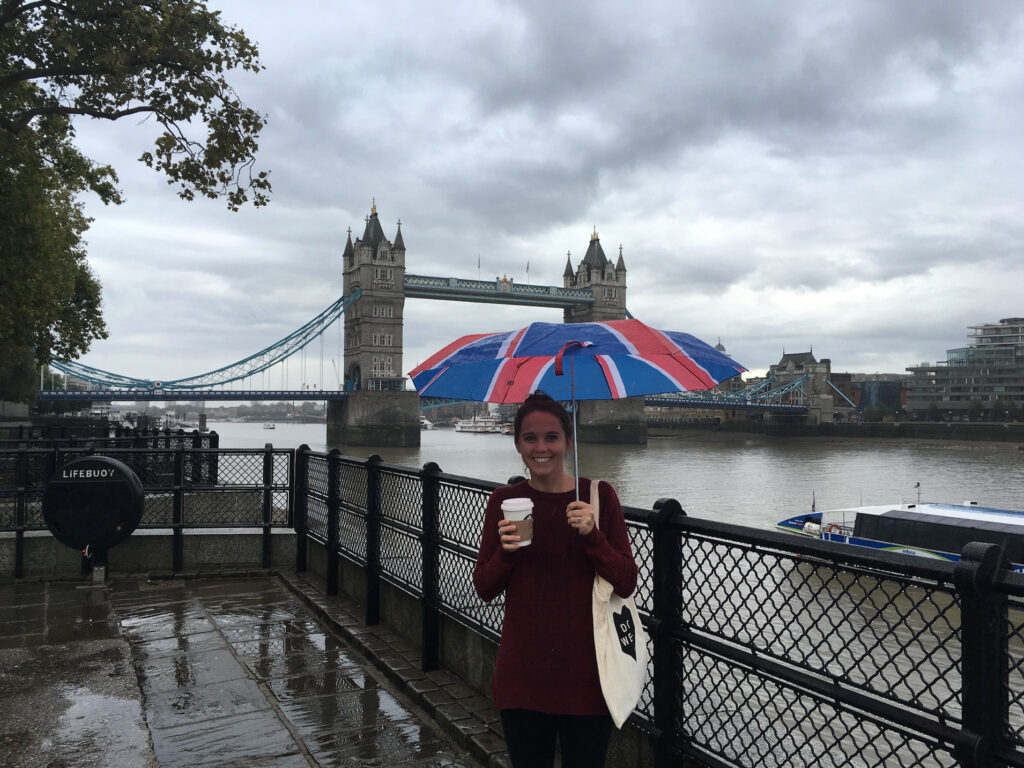
Where to stay in London
Greater London has 48 different neighborhoods that each offer something unique. It can be really overwhelming to pick a place to stay when the list of options is so long. To help you out, we’ve simplified things into five popular areas and who they’re best for.
- Stay in Bankside if … you love exploring the city by foot. There is so much to see and do within a two mile radius that you could not take a single train if you didn’t want to. We suggest Bankside Hotel.
- Stay in Finsbury if … you want to do something different each day. This neighborhood has a great central location, so you can get just about anywhere on a single train. It’s a perfect area for exploring all the different parts of London from one home base. We suggest The Montcalm Royal London House.
- Stay in Shoreditch if … you love brunch, coffee shops and markets. This artsy part of town is full of unique local shops and restaurants and is also home to some amazing markets and thrift shops. We suggest an an Airbnb.
- Stay in Whitechapel if … you are looking to save some money and like taking the train. You will be within walking distance to some things, like the Tower of London, but you will also have easy access to trains that will quickly get you anywhere around town. We suggest Wombats The City Hostel London.
- Stay Westminster if … you want to be in the heart of London. This is the tourist center of London and sites like Big Ben, Westminster Abbey and The National Gallery will be right outside your door. If you can’t walk somewhere, it’s well connected via all lines of public transit. It’s bustling and busy and really feels like London. We suggest the Clermont Charing Cross.
- Stay in Mayfair if … you want Luxury. The city’s most expensive hotels like the Four Seasons and The Connaught are in this area, with the Ritz and Langham hotels not far away. Here you’ll find plenty of old money, lavish design and proximity to London’s best parks. We suggest the JW Marriott Grosvenor House. (NOTE: We’re big fans of the brand in general, but we personally have not stayed at this location.)

How long do you need to stay in London?
Can we say as long as possible? The thing about London is that it will grow to the size of your trip. It can be a long weekend destination if you’re coming in from the EU or it can be a 10-day experience if you’re flying in from further away. London has so much to offer that you’ll never do it all in one visit, so why try?
What’s great about London is that it has great repeat value. Once you’ve visited London once, you’ll probably want to go back. You can go to new museums, new restaurants and walk new routes on each visit. You can balance old favorites with new adventures.
Here are a few different time frames to consider for your London vacation.
- Stay in London for 3 days if … you are a Europe local or are pairing London with other destinations in the UK. Three days is a perfect amount of time to see the highlights, and then venture over to somewhere like Edinburgh or Dublin for a couple more days.
- Stay in London for 5 days if … you are planning to visit London and other European cities. Pair London with Paris, Amsterdam and/or Brussels for an epic European experience.
- Stay in London for 7 days if … you prefer to stay in one place for your entire vacation. This is a good option for families who are traveling with lots of kid stuff and don’t want to be changing hotels during their trip. It’s also great for the type of traveler who likes to really “experience” a city and not just do the touristy things.
Typical London Budget
London is not typically considered a cheap destination. There are certainly ways to visit London on a budget, but the prices are going to be similar to other major cities like New York City or Paris. Here’s some general prices to expect when traveling to London.
- Hotel: £150 (e.g. ibis Shoreditch) to £350 (e.g. Bankside Hotel) per night
- Hostel: £40 per person per bed in shared dorm (e.g. Wombats The City Hostel London) per night
- Transportation: £10 per day + £50 per person for transportation to and from the airport
- Coffee: £3 for a single shot latte or cappuccino £5 for a specialty coffee
- Beer: £6 per pint
- Takeaway Meal: £10-15 (e.g. street food or fast food restaurant)
- Restaurant Meal: £40 per person
- Activities: £30 per day for adults and £15 for children
- Souvenir T-Shirt: £10
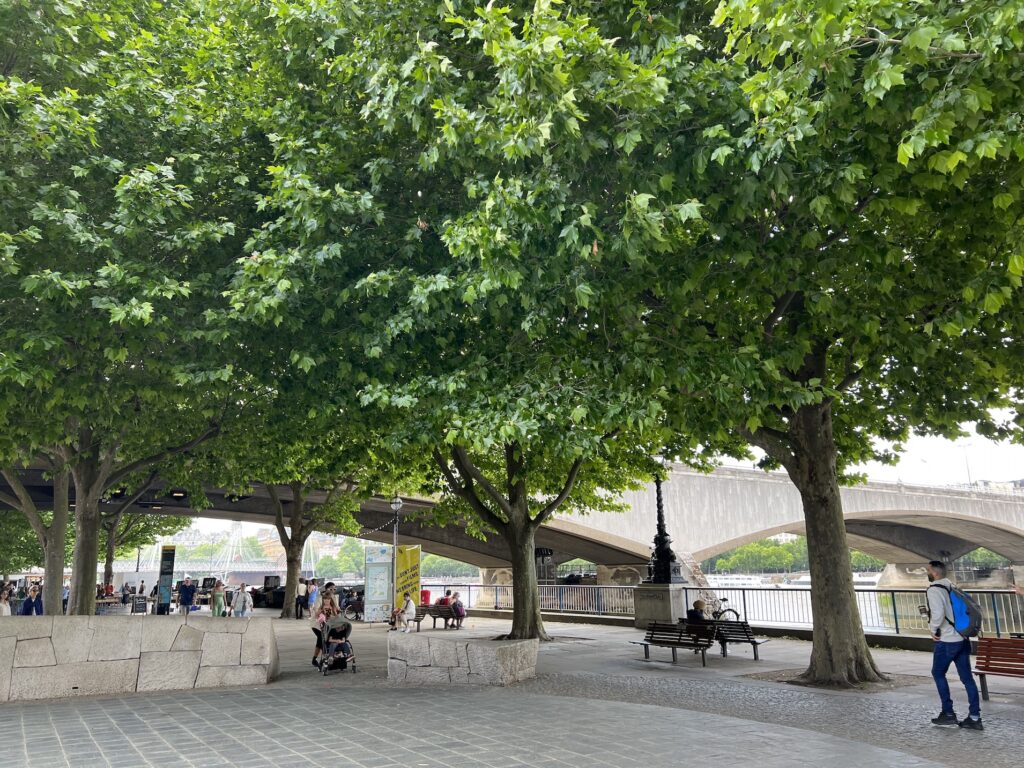
What to pack for London
In addition to your clothing, which should be driven by the timing of your trip, here are a few things to pack for your trip to London.
- Layers. Even during the summer when the days are warm, London can be chilly in the morning. Pack a light outer layer that is easily tucked away in your bag when it warms up or you go inside. I love a jean jacket in the summer or a Patagonia Better Sweater in the fall.
- Passport. Don’t forget that the UK is no longer part of the EU. If you’re coming from outside of the UK, you will need your passport.
- Comfy sneakers. No matter what your plans are in London, you’re probably going to do a lot of walking. Practical shoes can still be stylish. I love that a white sneaker goes with just about anything these days, which is a fashion trend I can get behind. Adidas Stan Smith‘s are good option for all genders and ages.
- Contactless enabled credit card. You can tap to pay just about everywhere in London, including tapping onto public transportation and even paid bathrooms. Be sure you have a credit card with that functionality in your wallet during your trip.
- Portable charger. Contrary to what you might think, there’s a chance you’re using your phone more when you’re on vacation. Looking up directions and restaurant reviews can drain your battery, so we always like to keep a portable charger on us when we’re out.
- Power adaptor. Fill your electronics bag with enough converters to meet your charging needs. If you’re traveling from the US, we love this adapter because it also includes two USB ports.
- Belt bag or backpack. Bring some sort of bag to keep your wallet, phone, charger and other items with you. You’ll surely fill it up with snacks or souvenirs throughout the day. I use a FlipBelt or belt bag and Kenny always uses his trusty Patagonia backpack. (His is sold out, but this one is similar.)
- Baby carrier. If you’re traveling with kids, bring a baby carrier. This will give them the best views of the city, plus you’ll have both hands free and won’t have to lug a stroller on trains or buses. We have a separate post dedicated to baby wearing for travel and our favorite baby carriers.

10 Tips for visiting London
1. Pay attention when crossing the street.
Just because you aren’t planning to drive in London, doesn’t mean you don’t need to be aware of traffic. It’s actually really hard to remember where the cars are coming from when you cross the street. It’s easy to get mixed up and look the wrong way.
This is such a common concern that the streets at major intersections in London have painted signage telling pedestrians which way to look. To be extra safe, always look both ways.
2. When at pubs, order food and drinks at the bar.
There are not typically hosts or servers at British pubs. Instead, come in and seat yourself. Then place your food and drink order at the bar.
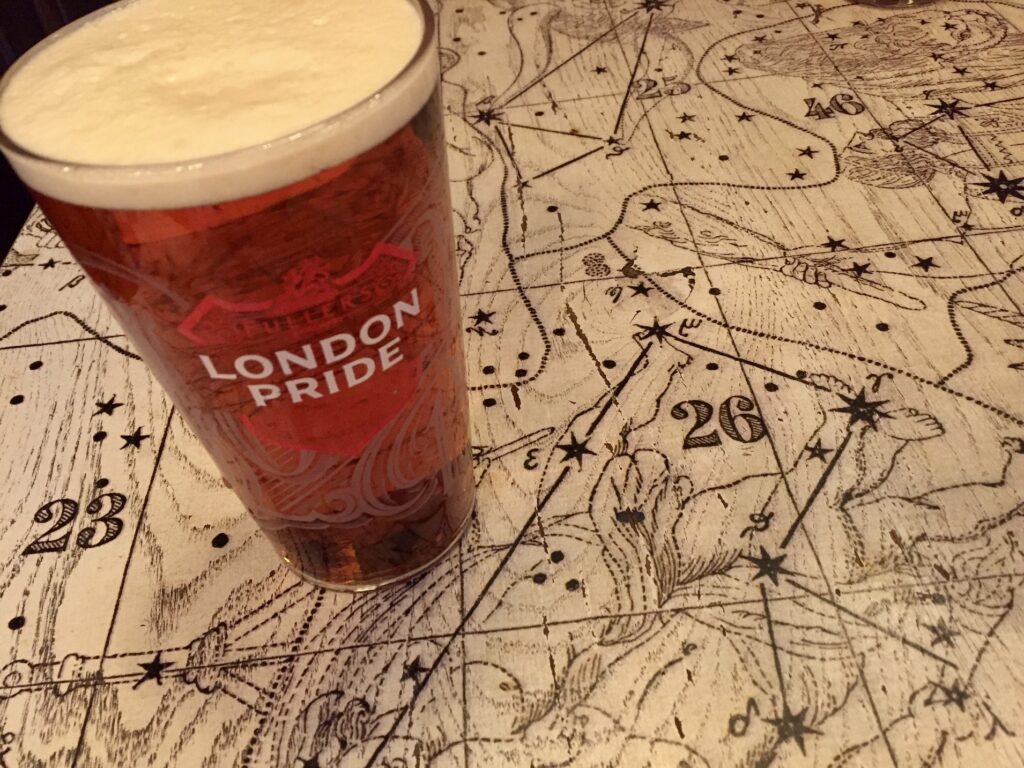
3. Pay-as-you-go on public transportation.
If you’re taking the London Underground or London Buses around the city, you can easily pay with any contactless credit card. You do not need to buy a separate ticket or transit pass.
As long as you always use the same credit card, your daily fare will be capped with a max fare based on which zones you pass through and when. The cap is always the same price or less than an unlimited travel pass, so it’s usually your best bet.
4. Take the bus at least once.
Speaking of public transportation, be sure to hop on an iconic double-decker red bus at least once during your trip. It’s a great way to see the city, especially if you can snag a front seat on the top. Buses will be the least crowded during the middle of the day on weekdays.
The bus can be slow, especially with London traffic, so we recommend the bus for a short trip. The journey from Carnaby to Big Ben is a great option.
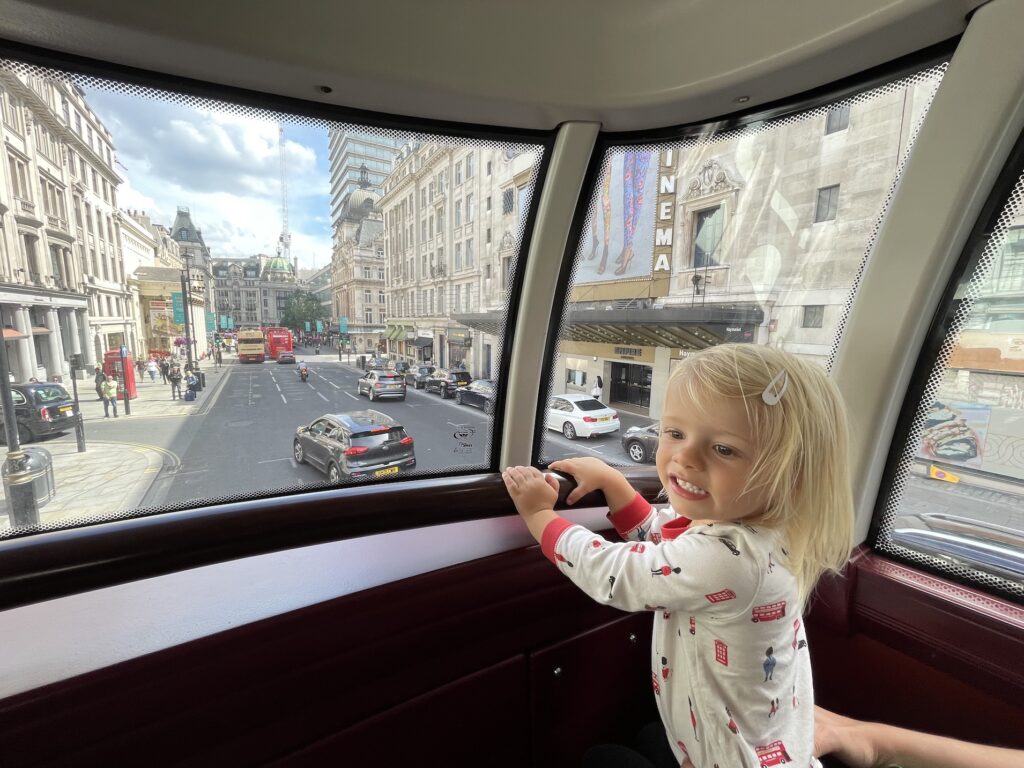
5. Bring apples to Hyde Park.
Fun fact: there are actually thousands of parakeets that live in the wild in London. There are mixed reports on how they got there, but there is no question that they are now thriving.
Pick up an apple before you head to Hyde Park, where the birds are known to hang out. If you’re lucky enough to find a big group of them (often on the east side of the Long Water), hold out a few pieces of apple. They’re used to humans and will often fly right up to you and eat the apples from your hand.
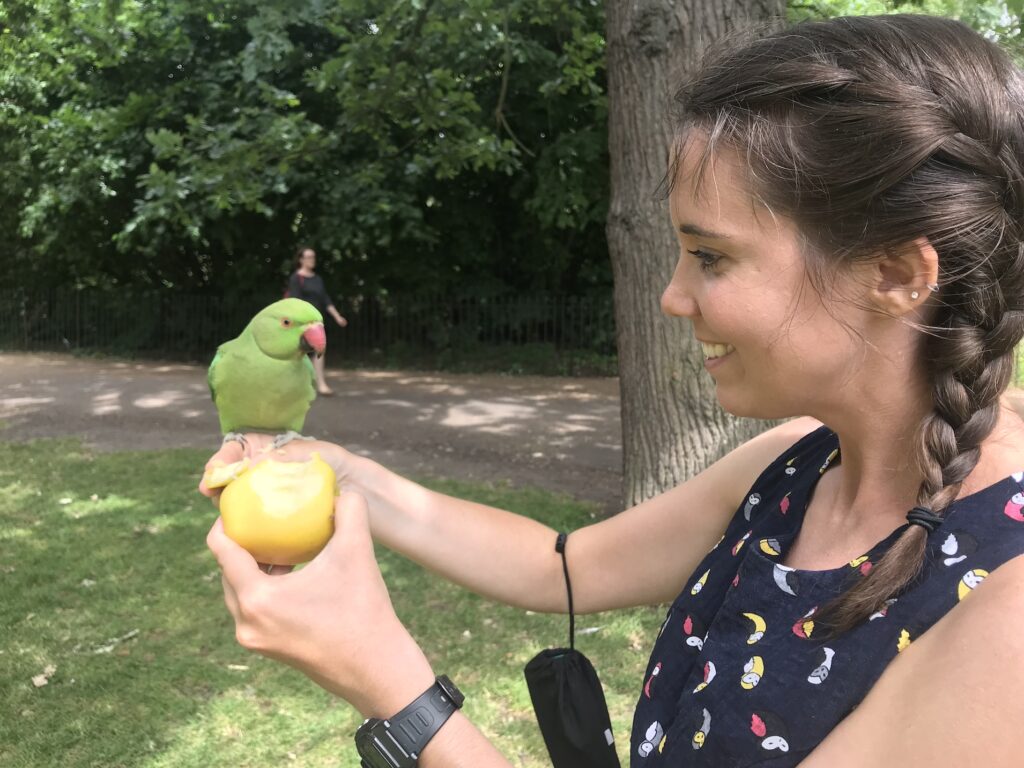
6. Plan your days in half days.
Greater London is huge and can be hard to tackle. Fortunately, lots of things are clustered together. To keep yourself from wasting too much time jumping all over the city, group nearby activities together into half day itineraries. Use lunch time to eat, recharge and reposition for the next part of the day.
I like to start by favoriting all the things I want to do and places I want to go on Google Maps. Once I have a visual on where all those things are located and know roughly how long they’ll take, I’ll group destinations into half-day itineraries.
7. Walk as much as you can.
There’s so much to see on the streets of London. From the people watching and street performers to the food trucks and shops, the city is just unavoidably vibrant. The best way to experience that is to be a part of it. Not only will you find stores, restaurants and pubs that you didn’t even know you were looking for, but you’ll find tranquility in the many gardens and parks, too.
If you’re able, try walking as much as possible. So many places in London are separated by just a mile or two. Getting there on foot might take a bit longer, but it’ll be way more fun.
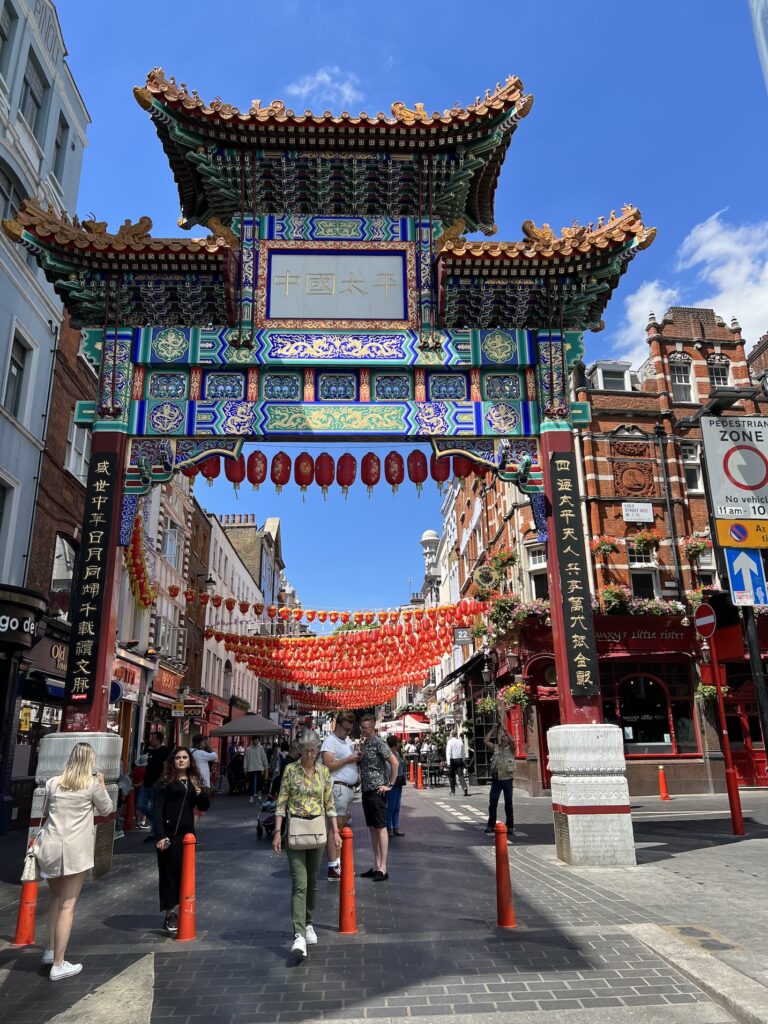
8. Try a cask ale.
If you find yourself in a pub for a pint, give a cask ale a try. This type of beer is common in London, and is a bit different than your typical draft beer. Cask ale is unfiltered beer that is much less carbonated and served at a warmer temper (cool vs cold) than a typical draft beer.
9. Book Sky Garden tickets in advance.
Sky Garden is an indoor, three-floor garden oasis in the sky. It’s billed as the city’s highest public garden. Trees and greenery cover a multi-story “hill” which looks out over the city below, and there is an open-air patio. It’s located right across the River Thames from the Shard, so you will get a very similar view, just a bit lower.
Entrance to Sky Garden is free, but a timed entry ticket is required. Tickets are usually released about four weeks in advance and can sell out quickly. Be sure to start checking four weeks out so you can be sure to get a day and time that works for your schedule.
If you can’t get a ticket, try to make a dining reservation at one of the Sky Garden restaurants. If you have a reservation, you can enter the garden without a ticket on either side of your dining reservation.
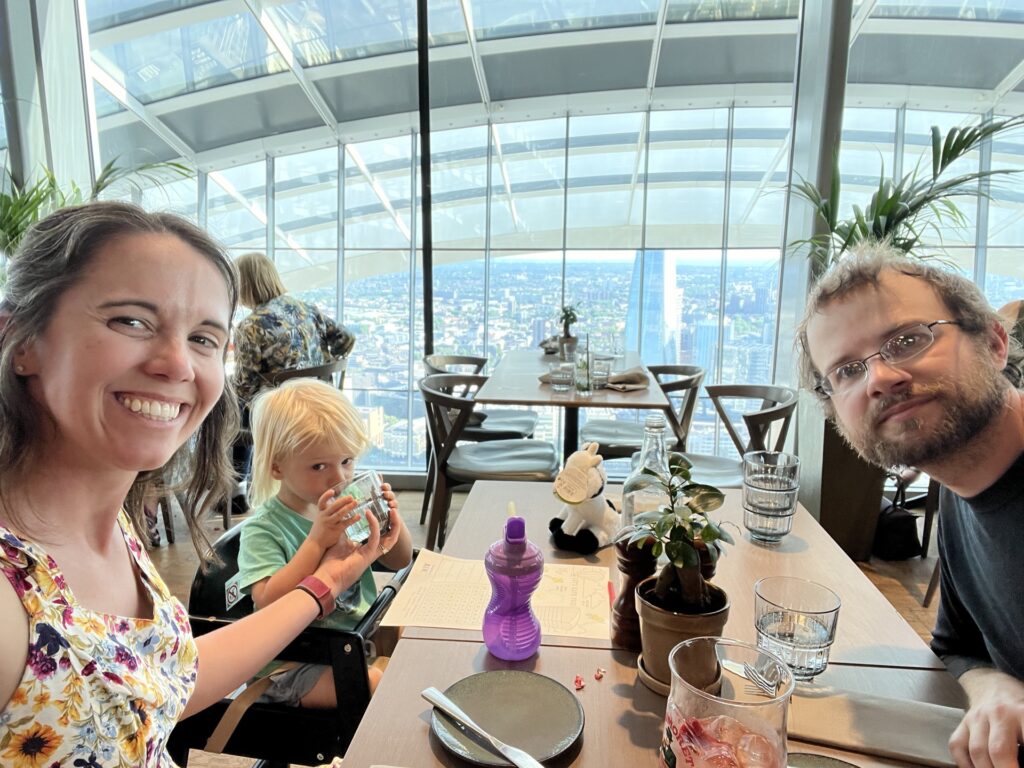
10. If you’re taking the train out of London to a different country, arrive early.
If you’re taking a Eurostar train service from London St. Pancras to mainland Europe, be sure to arrive early. Since this is an international journey, you will have to go through customs and security just like you would at an airport. The line to get to these checks is notoriously long, often the length of the entire station.
Eurostar suggests you arrive at least 90 minutes in advance, and we’d recommend following that suggestion. We decided to try an hour early this time and were fine, but we also got to cut the final portion of the line because we were traveling with a toddler. It would have otherwise been very close and you don’t want to miss your train.
Closing thoughts
I hope you feel confident and excited planning your trip to London. While I managed to fill this entire post with suggestions and recommendations, the truth of the matter is that you really can’t screw up a visit to London. There’s just so much to do and see, that it’s kind of impossible to have a bad time. If you’re anything like me, the only bad thing about a trip to London is when it ends.
Have you been to London before or are you planning for your visit? What’s your favorite thing to do there? What should I add to my next itinerary? Let me know in the comments.
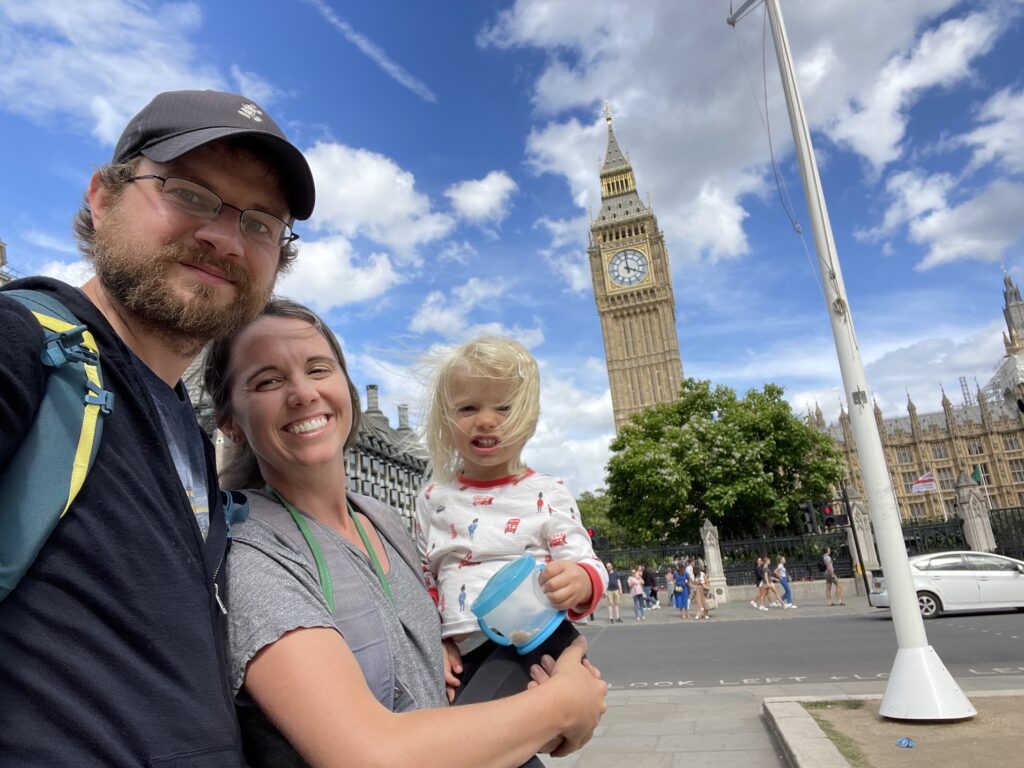
More From This Trip
- British Airways Business Class Review – 777 from JFK to LHR
- London Travel Guide
- Things to do in London with Kids – Family Travel Guide + Tips
- How to Use the London Underground – A Beginner’s Guide to the Tube
- Bankside Hotel London Review
- London Eye Visitor Guide – How to Visit the Iconic Ferris Wheel in London
- Stonehenge Visitor Guide + Inner Circle Tour Review
- Little Venice London Boat Ride Guide & Review
- Visiting London Transport Museum
- Complete Guide to Big Ben in London
- Borough Market Visitor Guide
- Best Views of Paris that Aren’t the Eiffel Tower
- Visit the Eiffel Tower in Paris – A Complete Guide
- Walking in Paris – 5 perfect walks through Paris with maps
- Paris with Kids – Planning Guide, Things To Do & Tips
- Montparnasse Tower Visitor Guide + Tips
- Amsterdam with Kids – Planning Guide, Things To Do & Sample Itinerary

